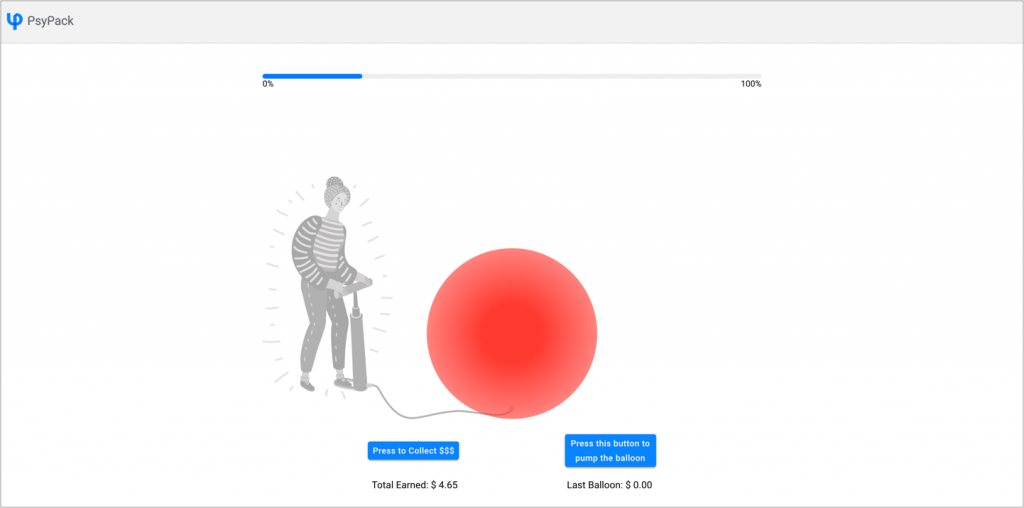Diversity is beautiful. But why does nature create each one of us so unique? We look different, we feel differently, we think differently, we behave differently and so on. In fact, no two of us have the same fingerprints!
Why wouldn’t nature create all of us the same – something of “a standardised homo-sapien”?
The challenge with such a high level of predictability is vulnerability. One adverse predator, one adverse virus, one adverse event could destroy the entire species. Diversity is not just beautiful but it is the essence of survival. Individual differences make us stronger as a species.
One could imagine that since individual differences are so intrinsically linked to survival and nature, it makes studying them of immense value.
Individuals vary in terms of physical characteristics, such as height, weight, strength, hair colour, and so on. They also vary along psychological dimensions. They may be intelligent or dull, dominant or submissive, creative or not so creative, outgoing or withdrawn, etc. The list of variations can be endless. Different traits can exist in varying degrees in an individual. In this sense, each one of us is unique as s/he exemplifies a typical combination of various traits.
Behavioral health professionals and social scientists have devised multiple instruments over the years to study these differences scientifically. Psychological assessments help us study the amazing diversity in human beings and give us sneak peek into the mysterious ways of nature.
What is a psychological assessment?
All sciences are built on systems of constructs and their interrelations. The natural sciences use constructs such as temperature, gravity, and global warming. Likewise, the behavioral sciences use a variety of constructs or attributes. These can be very simple phenomena like time taken to react to a stimulus, i.e. reaction time, and also in highly global concepts like happiness. Behavioral health professionals study both non-psychiatric attributes, like intelligence, aptitude, interest, personality and values etc., and psychiatric constructs like depression, anxiety, somatoform disorders, Post-Traumatic Stress Disorder (PTSD) and Attention-Deficit/Hyperactivity Disorder (ADHD) etc. Dr. Jordan Harris, a strong proponent of deliberate practice, recommends using outcome measures to improve clinical outcomes.1
Psychological attributes are not linear or unidimensional. They are complex and expressed in terms of dimensions. They are usually multi-dimensional. For example, if a child is having trouble in school, they might not fit strictly into a categorical diagnosis of a reading problem such as dyslexia, or an attention problem such as attention-deficit hyperactivity disorder (ADHD), or difficulty with impulse control? They might have different severity levels of the constituent symptoms of each of those. If you want to have a complete assessment of a person, you will need to assess how s/he functions in various domains or areas, such as cognitive, emotional, social, etc. With regards to diagnosis of mental disorders, the Diagnostic and Statistical Manual of Mental Disorders (DSM-5) favours the dimensional approach over the categorical approach.2
Assessment is the first step in understanding a psychological attribute. Assessment refers to the measurement of psychological attributes of individuals and their evaluation, often using multiple methods in terms of certain standards of comparison. Once assessment is done, we can use this information to predict future behavior of an individual. If the predicted consequence is not what we want, we may want to intervene to effect a change.
The American Psychological Association defines psychological assessment as “the gathering and integration of data to evaluate a person’s behavior, abilities, and other characteristics, particularly for the purposes of making a diagnosis or treatment recommendation. Psychologists assess diverse psychiatric problems (e.g., anxiety, substance abuse) and non-psychiatric concerns (e.g., intelligence, career interests) in a range of clinical, educational, organizational, forensic, and other settings. Assessment data may be gathered through interviews, observation, standardized tests, self-report measures, physiological or psychophysiological measurement devices, or other specialized procedures and apparatuses.”3
Assessment Methods
Psychologists use several techniques for assessment;
- Psychological Test is an objective and standardised measure of an individual’s mental and/or behavioural characteristics. These tests are standardized so that test-takers are assessed in a similar way, no matter where they live or who administers the test. Some of the popular psychological tests are IQ tests like the Stanford–Binet test, emotional intelligence tests like the EQ-i 2.0, mental illness tests like the PHQ-9, personality tests like the Minnesota Multiphasic Personality Inventory (MMPI), projective tests like the Rorschach Inkblot Test, etc.
- Interview involves seeking information from a person on a one-to-one basis. You may see it being used when a counselor speaks to a client about their concerns. This helps them observe how the client thinks, reasons and interacts.
- Case Study is an in-depth study of the individual in terms of her/his psychological attributes, psychological history in the context of her/his psychosocial and physical environment. These are based on data generated by different methods, e.g. interview, observation, questionnaire, psychological tests, etc.
- Observation involves employing systematic, organised, and objective procedures to record behavioural phenomena occurring naturally in real time. Think of observing mother-child interactions in a natural setting. The major problem in observational methods is that unlike in the laboratory setting, the observer has little control over the situation and the reports may suffer from subjective interpretations of the observer.
- Self-Report is a method in which a person provides factual information about themself and/or opinions, beliefs, etc. that they hold. Such information may be obtained by using a psychological test, an interview schedule or a questionnaire, or a personal diary.
Characteristics of a good test
All measuring instruments, be it a measuring tape, a bathroom scale, medical tests like X-rays or blood tests, or a psychological test must follow certain basic scientific principles to be any useful.
Validity
A psychological test is useful only to the extent to which it actually measures what it purports to measure. For example, a test measuring a stable personality trait should not be measuring transitory emotions generated by situational conditions.
There are multiple statistical methods of establishing validity;
- Content Validity: The extent to which items on a test are related in a straightforward way to the characteristic the test aims to measure. For example, if an intelligence test consisted of measurements of the color of the skin of a person, one would probably conclude that it is low in content validity.
- Criterion-Related Validity: The extent to which scores on a test are related to behaviors (criteria) that are relevant to the characteristics the test purports to measure. For example, scores of students on an academic aptitude test should correlate with their school grades.
Reliability
The extent to which any measuring device (including a psychological test) yields the same result each time it is applied to the same quantity. For example, the measuring tape should not measure your height differently when measured by two different people. It must be consistent.
Several different methods exist for assessing a psychological test’s reliability;
- Split-Half Reliability: Let us say we are designing a test to measure intelligence. It is important to establish that all the items on the test actually measure the same characteristic i.e.. intelligence in this case. This is called internal consistency. One could split the test in two equal halves (such as odd- and even-numbered items) and compare the scores of a set of people on both halves. A low correlation between the two halves would mean that some items of the tests are measuring different constructs. A higher correlation on the other hand would increase our confidence on the consistency across the items.
- Test–Retest Reliability: In a usual scenario, one would expect scores on tests like intelligence tests to remain stable over time for a particular person. This is established by making the same people take a test at different times. Higher correlation between the scores on two occasions would increase our confidence in the temporal reliability of the test.
Norms
You would never compare scores of two students from, say grade 5 and grade 10, on a mathematics test. Clearly, that would be unfair. Similarly, psychological constructs are also relative in nature. For example, constructs like intelligence are not absolute, but measure standing of an individual relative to a group.
Test norms consist of data that make it possible to determine the relative standing of an individual who has taken a test. By itself, a subject’s raw score (e.g., the number of answers that agree with the scoring key) has little meaning. Almost always, a test score must be interpreted as indicating the subject’s position relative to others in some group. Norms provide a basis for comparing the individual with a group.4
To ensure fairness, it is essential that the norms used to assess an individual are based on a population which is representative of that particular individual.
Ethics of assessments
Psychological tests serve many useful purposes such as selection, counselling, guidance, self-analysis, and diagnosis. Unless used by a trained practitioner, they may be misused either intentionally or unintentionally. A practitioner is expected to follow certain ethics (or moral principles) while conducting the tests.
- The practitioner must be trained and competent to conduct assessments. They must be mindful of the potential negative impact of the measures.
- The practitioner must possess the knowledge of the particular psychometric assessments and give due consideration to the sources of variability such as context, setting, purpose and population.
- The practitioner must use standardised assessments and triage conclusions from multiple sources of assessment. They must be mindful of the appropriateness of the norms for the particular individual and ensure fairness.
- The practitioner must practice with cultural competence w.r.t. diverse, underrepresented and vulnerable populations. They must be sensitive to individual differences, various forms of biases or potential biases, cultural attitudes, population appropriate norms, and potential misuse of data.
- The practitioner must strive to share the results of assessment and psycho-educate their clients with regards to the constructs being assessed.
- Practitioners who educate and train others in testing, assessment, and evaluation; must maintain their own competency in training, supervision and assessment practice.
- Practitioners who use technology when testing, assessing, or evaluating psychological status must strive to remain aware of technological advances and limitations of the same. Additionally, they must ensure privacy and data security.
The future of psychological testing
While telemedicine and digital tools have become increasingly common over the past few years, the COVID-19 pandemic has super-charged and accelerated the adoption of telepsychology. Practice management tools like PsyPack help psychologists, therapists, social workers and counselors to conduct not just likert scale assessments like K-10, GAD-7, PCL-5 etc. but also digital tasks based assessments like BART and CBTT.

Startups like Pymetrics and Arctic Shores are beginning to provide game-based psychometric evaluations to assess attention, decision making, risk tolerance etc., for the hiring process. ‘Gamified’ assessments are more engaging than traditional psychometric tests.
Further the use of artificial intelligence (AI), including facial recognition and text analysis software, in psychometric assessments are promising in supplementing a clinicians’ efforts to spot mental illnesses earlier and improve treatments for patients. Computers could be trained to analyse a variety of data – mobility, physical activity, facial expressions, sleep patterns, typing behavior, body language and more. Apple is already working on iPhone features to help detect depression and cognitive decline.5 Although promising, these technologies first need to be shown to be effective. Additionally, some experts are wary of bias and other ethical issues as well.
